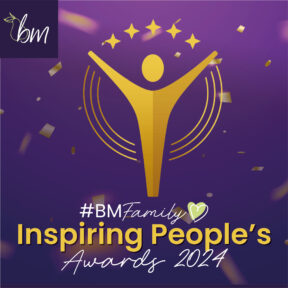Blogs
Stand up to bullying

At BM we have no tolerance to bullying. We also recognise it’s important to understand what that means and to encourage a kind working culture.
What is bullying
Bullying can show up in all sorts of ways. It can be verbal, virtual, physical. It can also show up as different extremes. The result is that the person on the receiving end is made to feel insignificant, less confident and less worthy.
Believe it or not, we witness it all the time, especially through media channels. Celebrities are often taunted and judged. It’s common to hear people in the public eye receive death threats. Yet as a society we feed the language, regardless of the #bekind campaign after Caroline Flack took her own life. The normalisation of this behaviour can make us believe it’s not associated to bullying.
Not being directly associated with the situation helps us stay objective or even judgemental. The scary part is, the normalisation of this behaviour. Seeing it regularly can infiltrate into our own lives and mindset without us being aware.
A lot of bullying in the workplace may not be connected to our everyday media hypnosis. However, we are all responsible for recognising bad behaviour and language. It is vital we don’t create a culture where making individuals feel worthless is normal.
Questions to ask yourself when interacting with your colleagues?
- What is the difference between banter and bullying?
- How do you make your colleagues feel?
- What does your tone sound like to the person who annoys you?
- If you’re having a bad day, do you choose to take it out on others or do you choose to channel your energy into something positive?
- If you witness one of your colleagues singling another colleague out, in a negative way, on a frequent basis, do you raise their awareness by highlighting it is not acceptable?
- Do you believe you treat everyone with kindness and respect?
We all have a role to play
The best way of recognising bullying in the workplace is if someone is displaying ‘repetitive, intentional hurting of one person or group, by another person or group where the relationship involves an unbalance of power’ (taken from www.anti-bullyingalliance.org.uk)
As well as wearing odd socks to raise awareness about anti-bullying, reach out to that person who you don’t necessarily get on with, and do or say something kind.
If you believe you are a victim of bullying, please don’t suffer in silence. Reach out to your line manager or the People & Talent team. As a victim of bullying, you may feel you are to blame which is preventing you from saying anything. Connecting with an independent source may help resolve the communication barrier.




